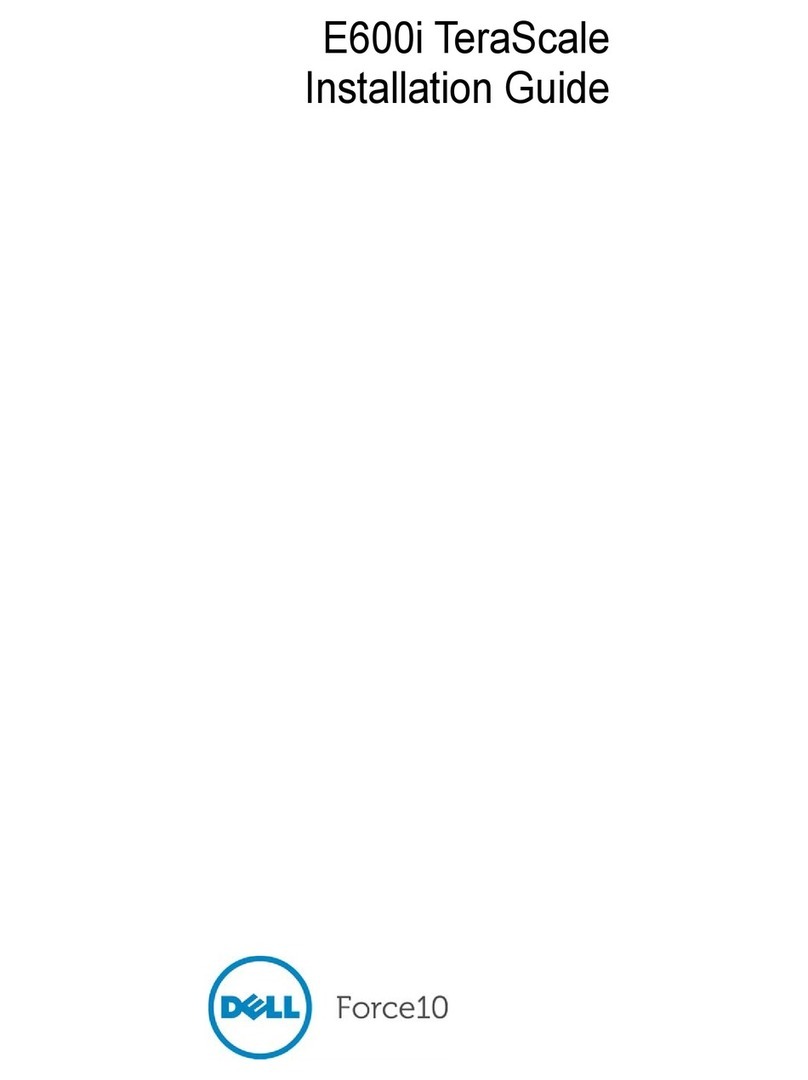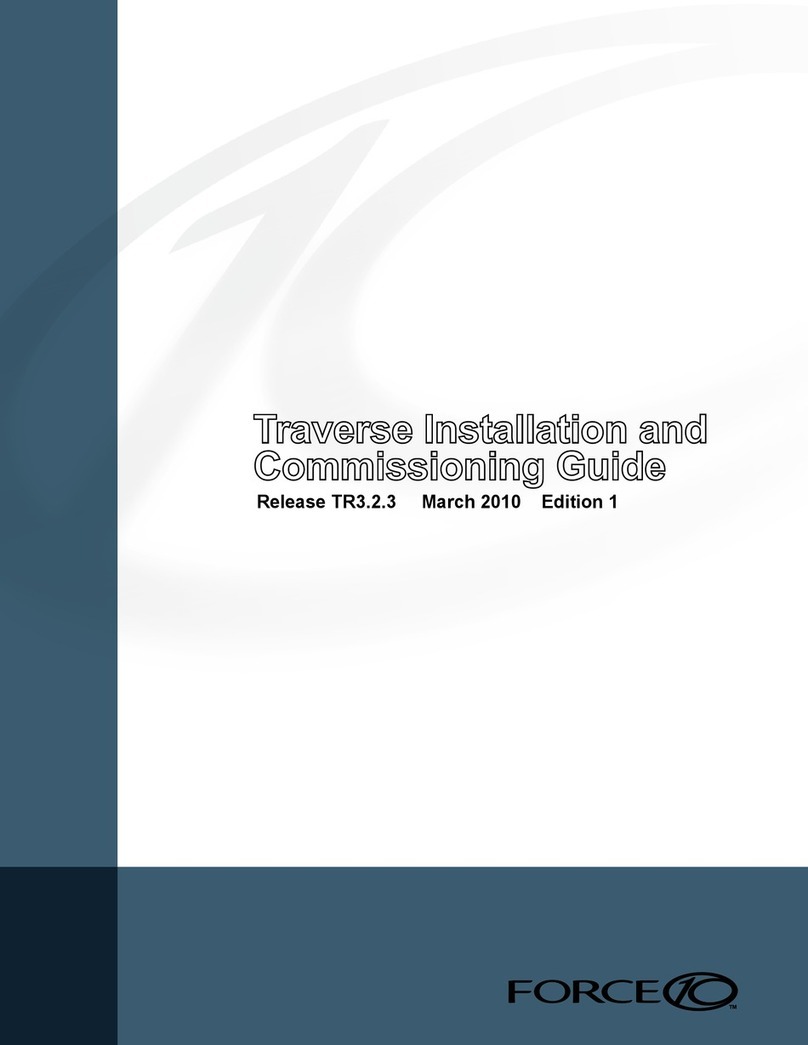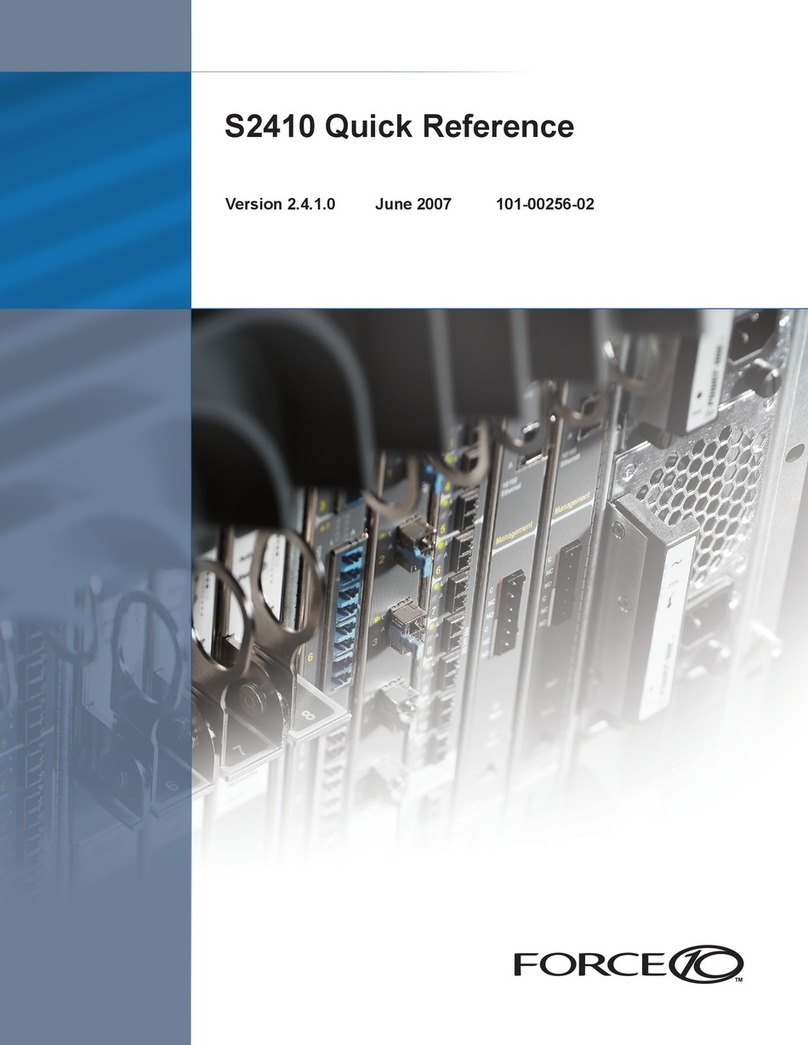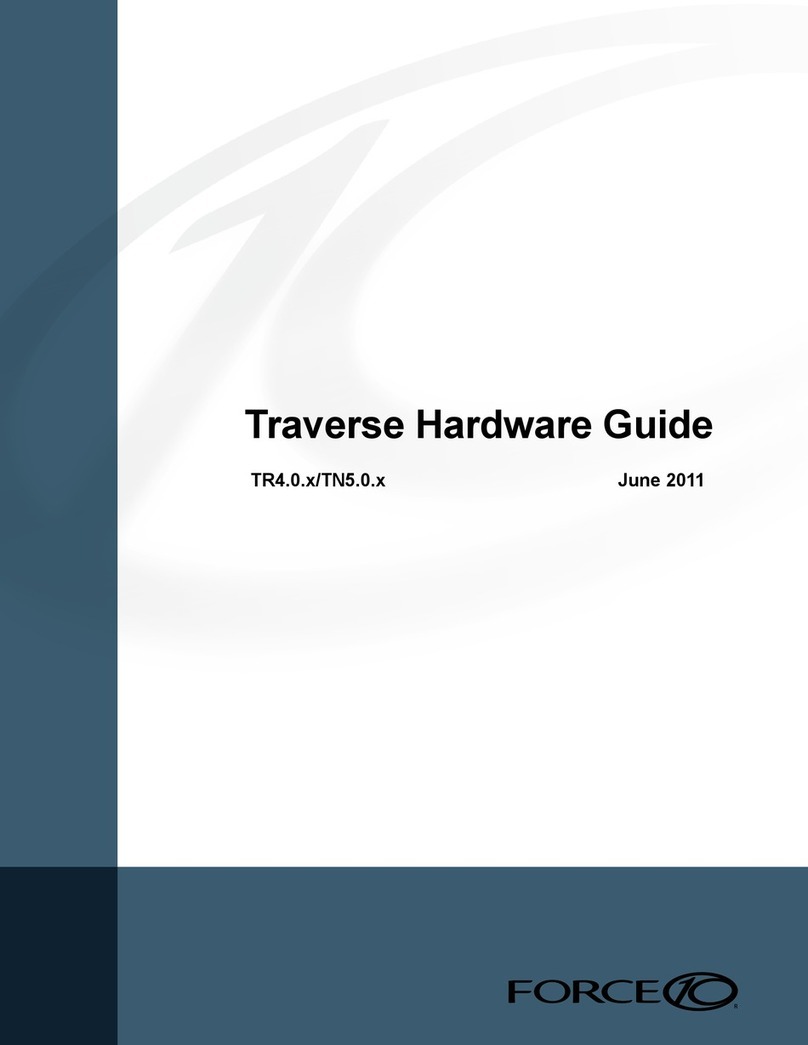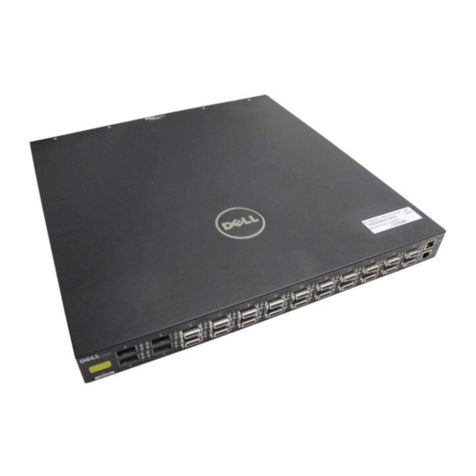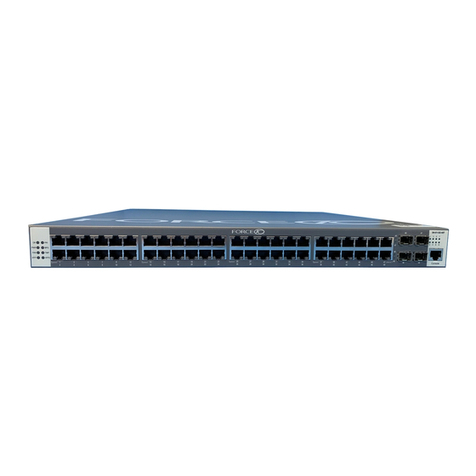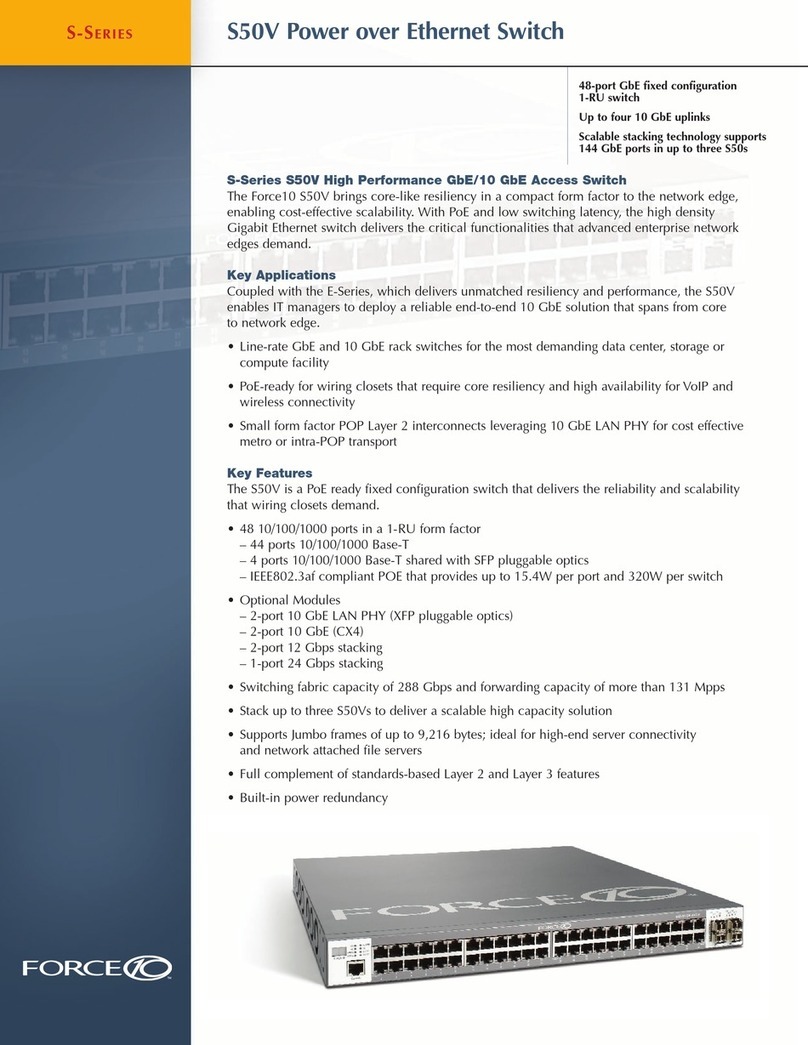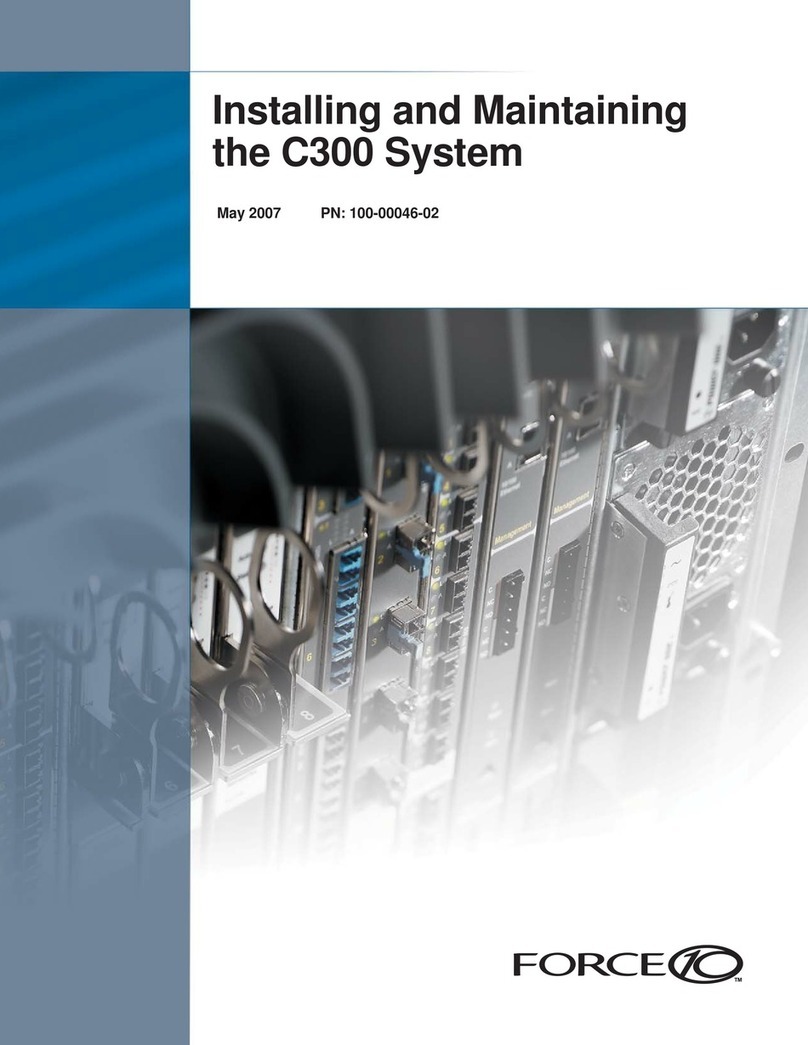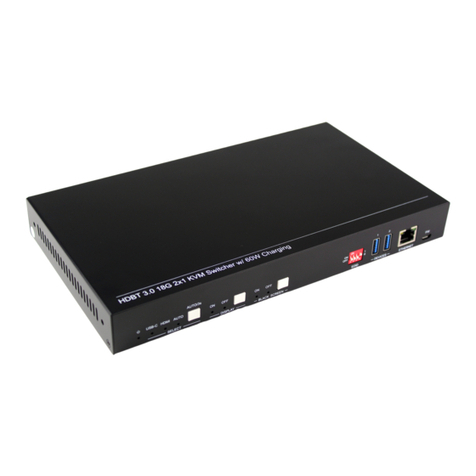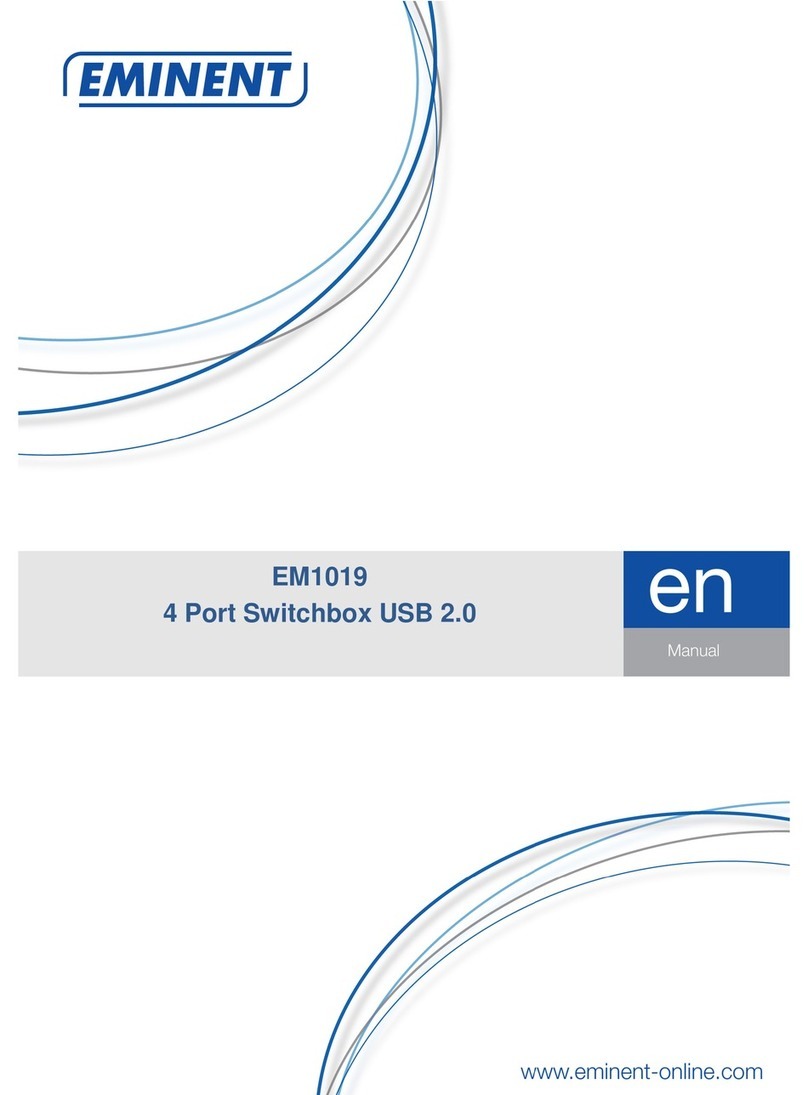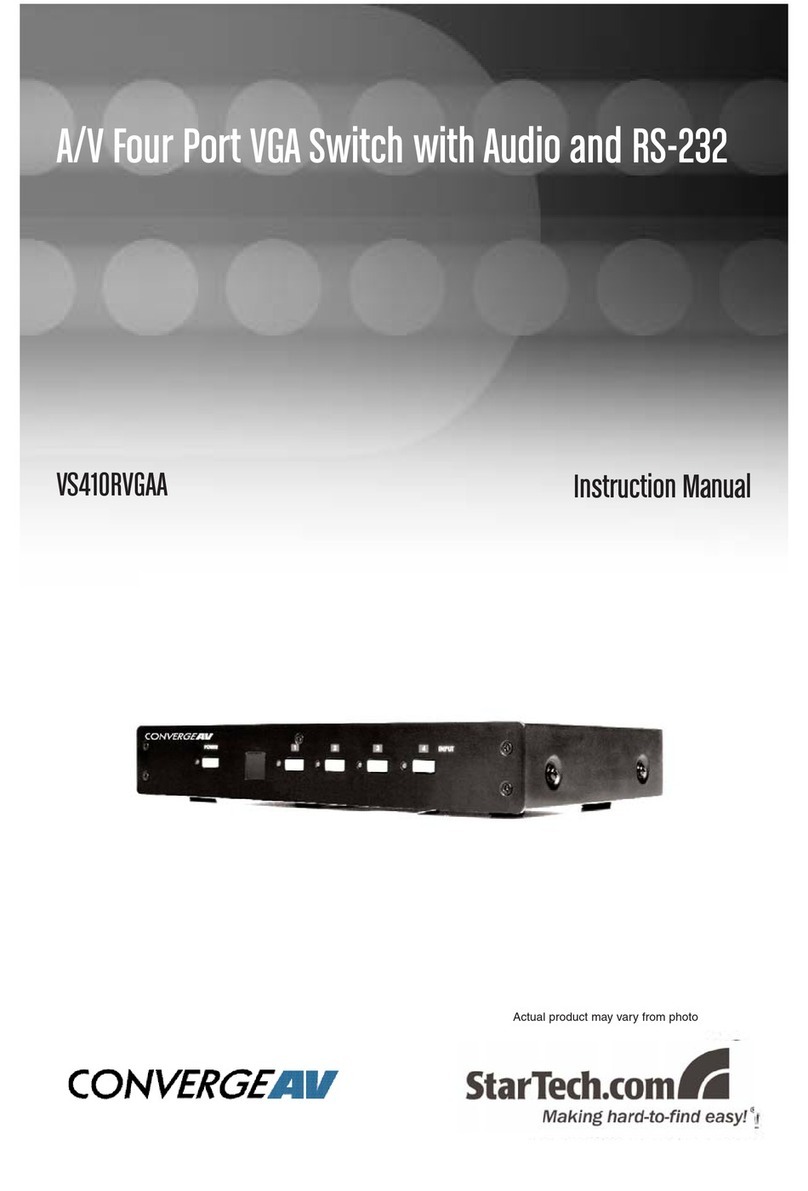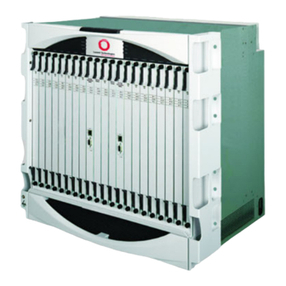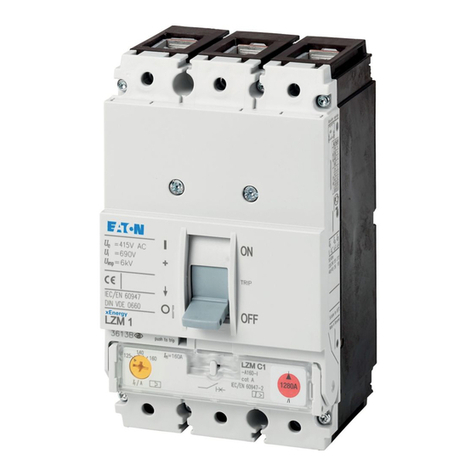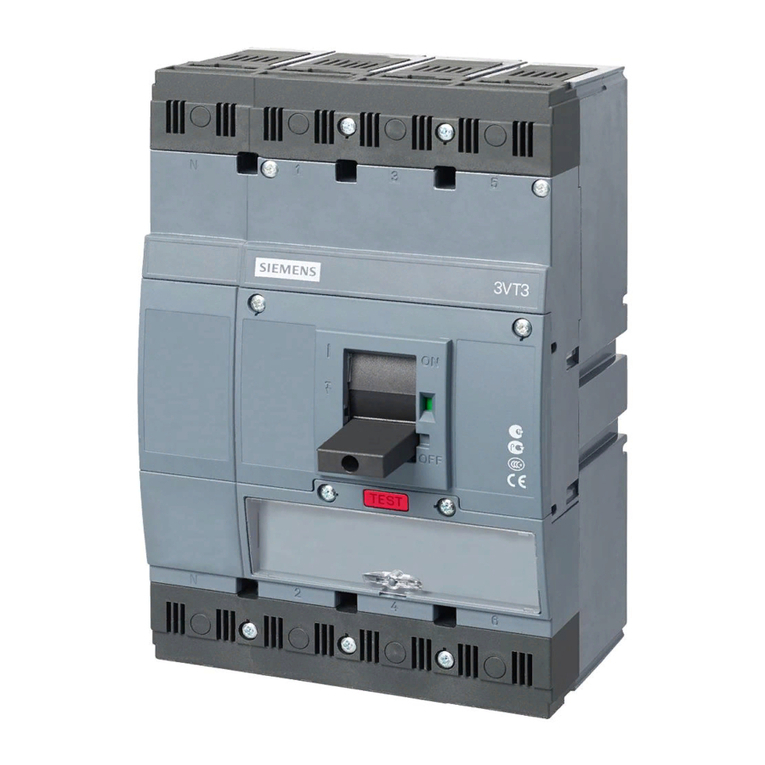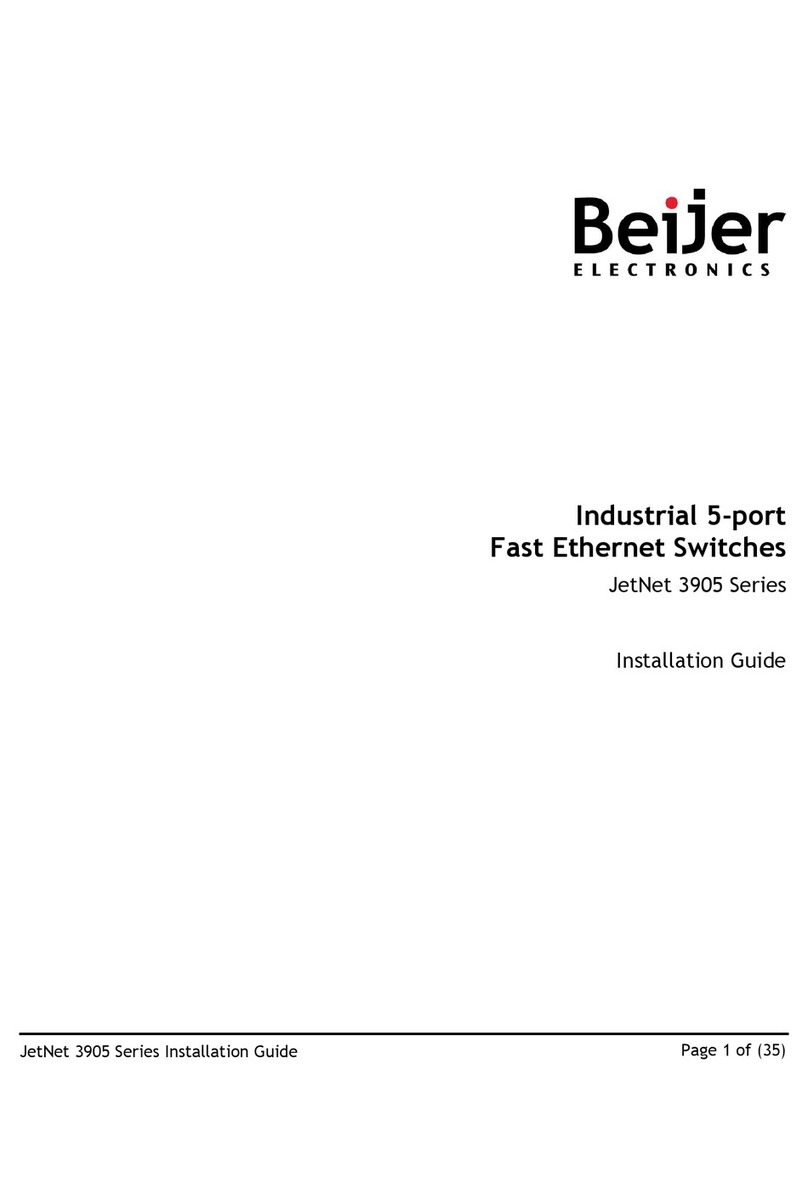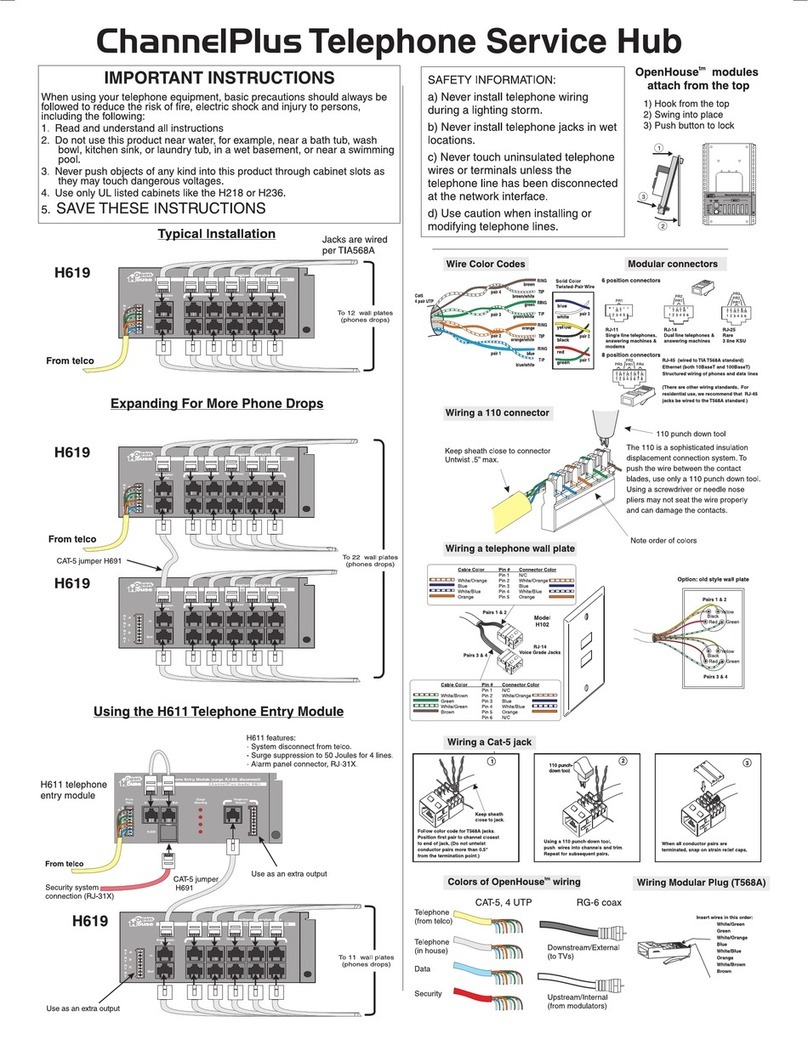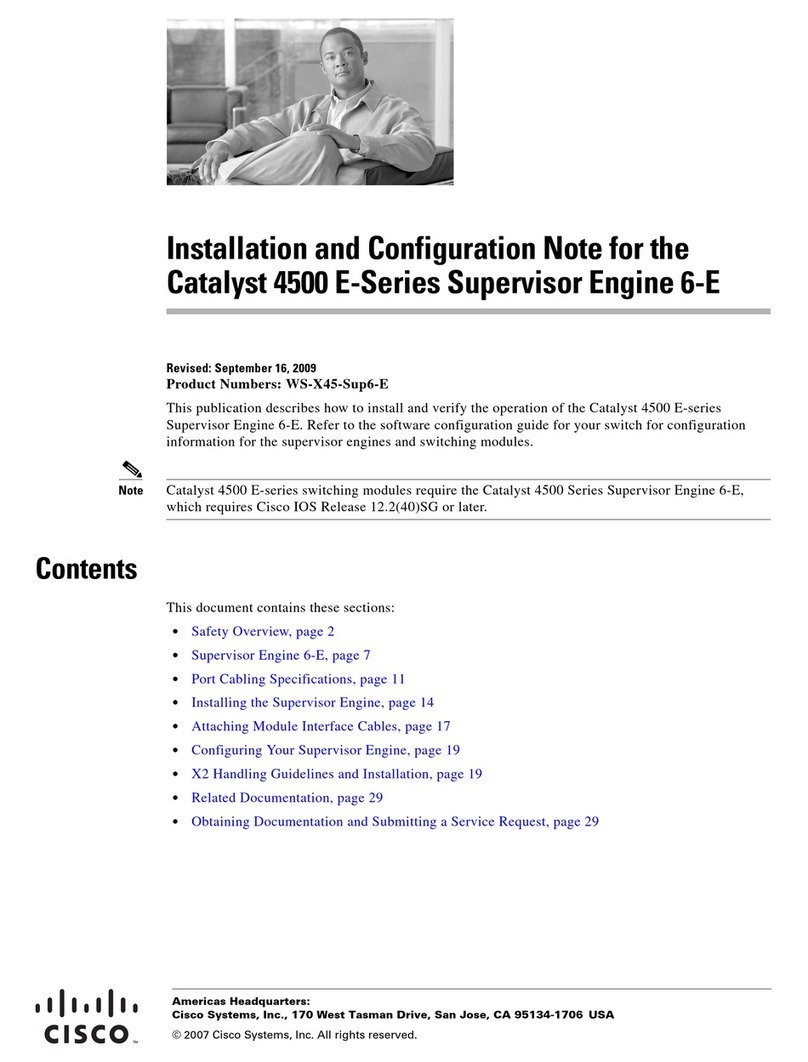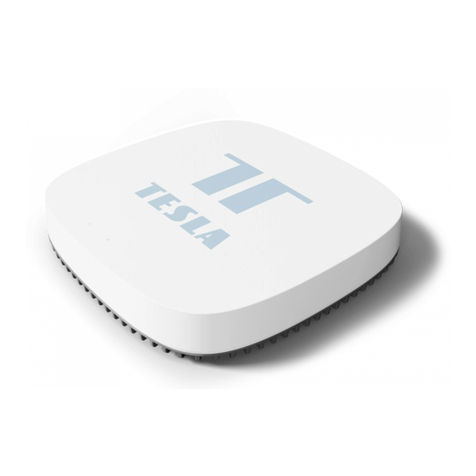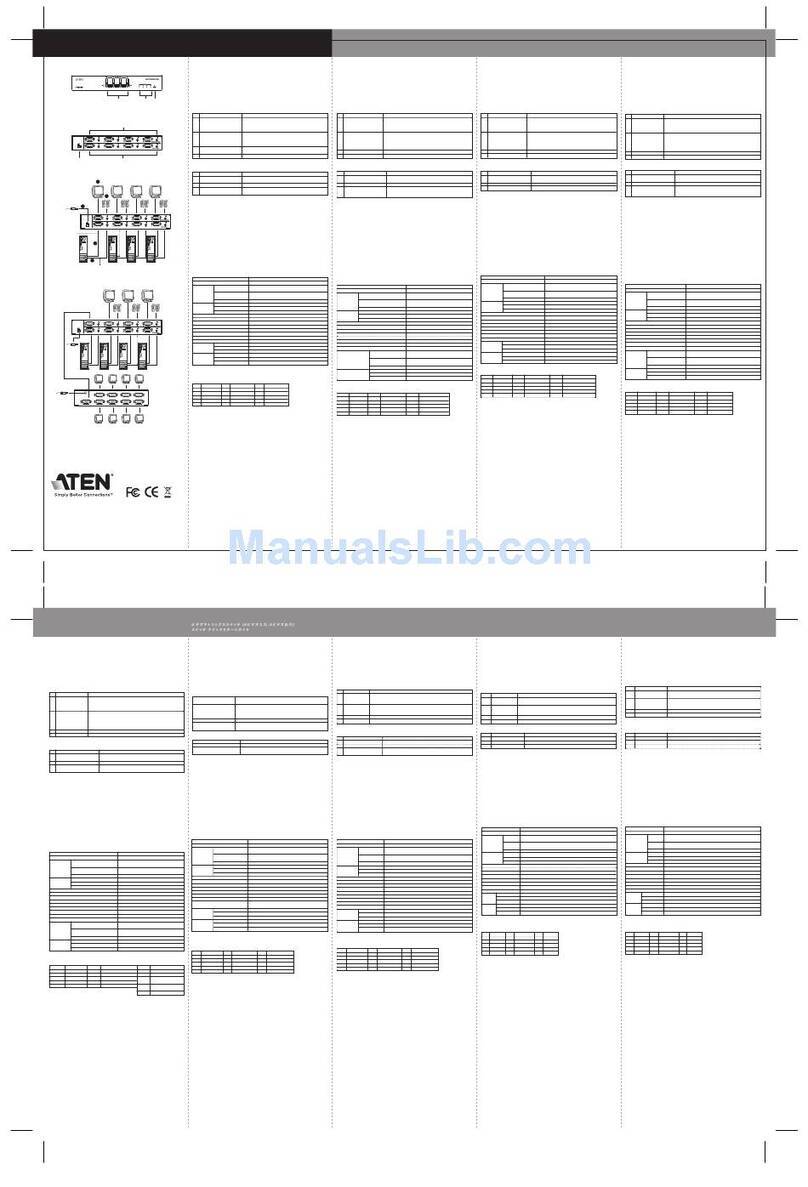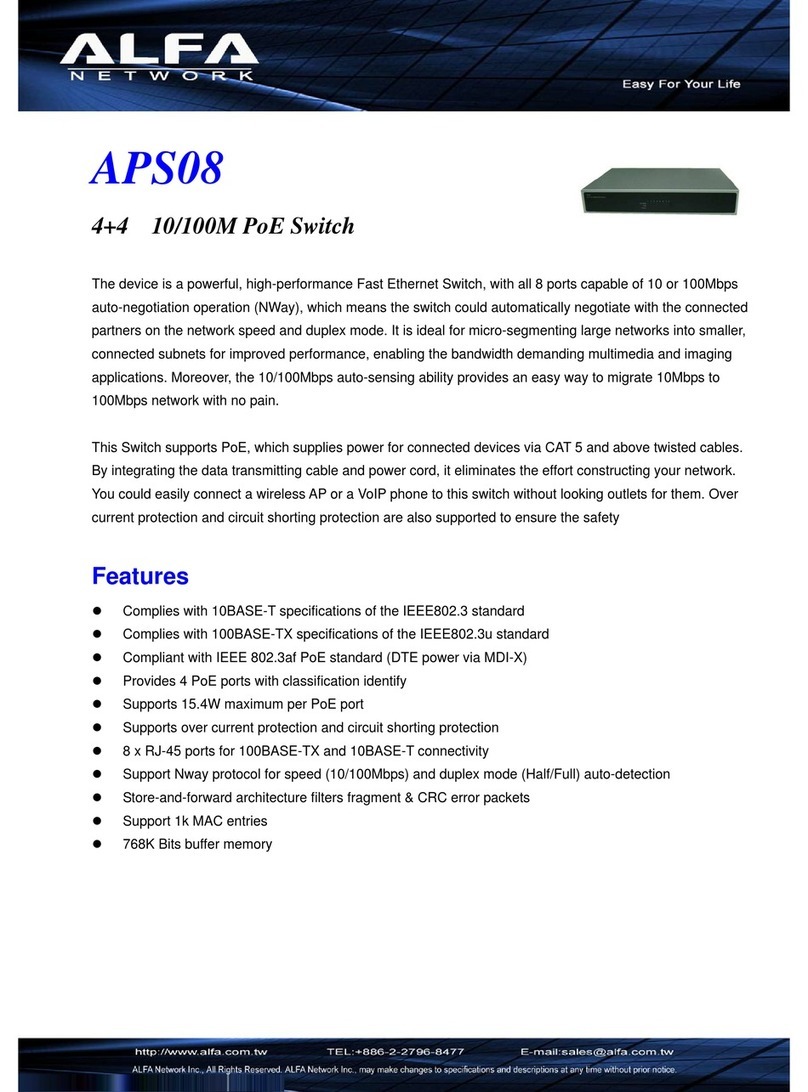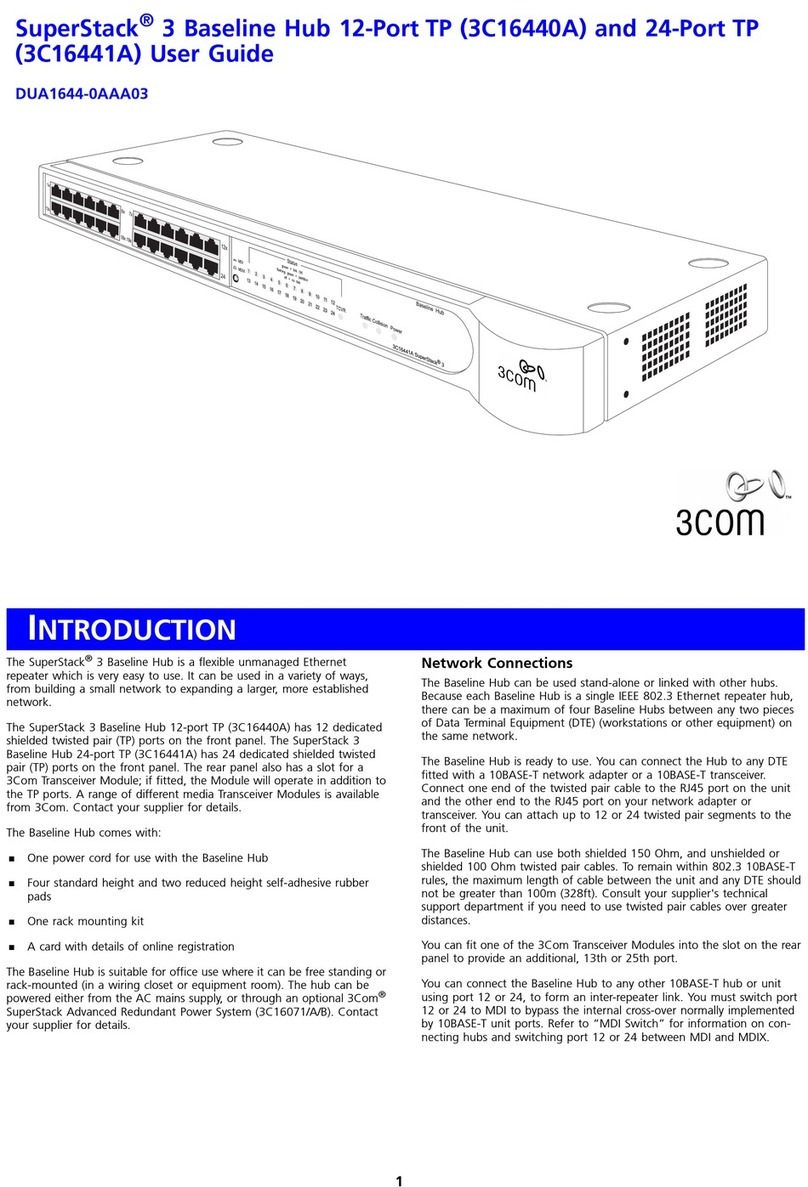
S50 Quick Reference 19
Notable Differences between S-Series and E-Series
This section describes the major differences in how command usage on the S-Series differs from the
E-Series. Users familiar with the E-Series CLI will notice enough similarities in the CLI environment on
the S-Series that they can quickly learn the variations in syntax and usage.
Of course, there are more commands with more detailed options in FTOS than in SFTOS, because FTOS
supports the E-Series switches, which are larger and more complex than the S50 (currently, the only switch
in the S-Series line, supported by SFTOS).
Interface Nomenclature
The major difference between SFTOS and FTOS is that commands that contain a parameter in the form
slot/port in FTOS use a unit/slot/port parameter in SFTOS for both physical and logical interfaces.
For physical identifiers, the unit is the stack member number in an S50 stack. For example, both FTOS and
SFTOS have the show interface command, but the SFTOS equivalent of show interface
gigabitethernet 2/11 (slot 2, port 11 in FTOS) would be show interface 1/0/11, where 1/0/11
represents unit 1 in the stack, slot 0, port 11. If the port were in unit 2 of the S50 stack, the command would
be show interface 2/0/11.
Logical interface identifiers are automatically generated by SFTOS. They also use the unit/slot/port
convention, but system unit numbers are always 0, slot numbers are sequential, starting at 1, and the
interface numbers (in the third position) are also sequential, starting at 1 per slot.
Other variations include:
•Creating a static route: The SFTOS command ip route supports only IP addresses for setting the
next-hop router, while ip route in the FTOS also supports physical interfaces.
•Setting the size of the logging buffer: The FTOS command logging buffered has a parameter
that enables you to set the size of the buffer, while SFTOS does not. Both FTOS and SFTOS invoke
debug logging with the number 7 for the severity level parameter. The SFTOS command is logging
buffered 7.
•Displaying the MAC address table: Both FTOS and SFTOS have the show mac-address-table
command, but the SFTOS command show mac-addr-table provides more similar results to that
FTOS command. The SFTOS syntax contains the unit/slot/port form cited above, for example,
show mac-addr-table interface 1/0/4.
•Displaying system information: The FTOS command show linecard is similar to show
version in SFTOS, which shows basic information, including the running software version and up
time. Other similar commands in SFTOS are show hardware and show sysinfo, and show
tech-support provides the results of a group of those similar commands.
•service timestamps: This FTOS command is not available in SFTOS. SFTOS sets timestamps
automatically.
•aaa authentication: This FTOS command is available in SFTOS as authentication.




















